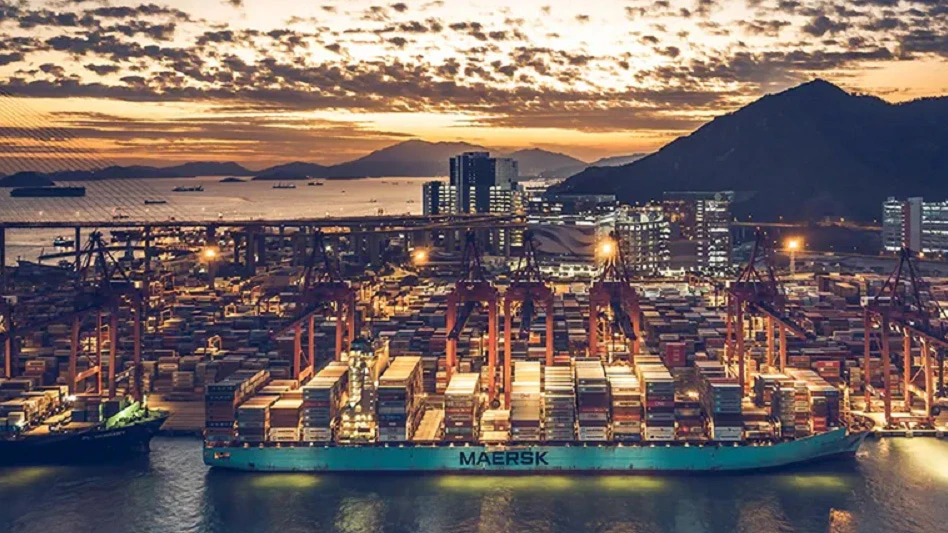
Photo courtesy of Maersk
In mid-February, freight trading platform Container Xchange reported that ocean container shipping rates on some routes from China had risen by more than 200 percent between November of last year and this February after militants in Yemen began firing on cargo ships.
In a March update, the Hamburg, Germany-based service provider says following the end of Chinese New Year, which concluded around Feb. 23, business activities resumed in China, but freight rates “failed to sustain their upward momentum.”
“Our forecasts predict that the container prices will fall by a measure of 8 percent to 16 percent in [March and April] in China, going by the cyclic nature of price developments as an impact of the post Chinese New Year demand reduction," the report says.
Container Xchange also predicts in early March that, pending any unforeseen geopolitical developments, container prices potentially could decline across the United States, at the ports of Vancouver and Toronto and in Europe in the coming two months.
Recyclers in North America or Europe do not pay the outbound China rates, but high shipping prices often are a signal of a lack of available or helpful positioned containers. As well, the price of the rate from China to other continents can affect the backhaul rate shippers of old corrugated containers (OCC), recycled-content plastic pellets or nonferrous or ferrous scrap pay when shipping to Asia.
Regarding how ocean freight shippers have been reacting in the recent period of rate volatility, Container Xchange says 63 percent of the companies it surveyed in February are looking to diversify their supplier portfolio while, conversely, the other 37 percent are still going to reduce the number of suppliers they used to diversify in 2021 in response to the pandemic and its resulting repercussions.
The persistent Red Sea attacks continue to lead to shifts in trade patterns, Container Xchange says. For scrap importers and exporters, sources tell Recycling Today tactics have included buyers in China favoring North American nonferrous scrap versus European shipments, while buyers in India have been seeking material in Malaysia, Japan or Australia as a way of avoiding the Red Sea.
Among its survey respondents, a freight forwarder in the U.S. tells Container xChange, “The situation is getting trickier for us as freight forwarders due to the ongoing war in the Middle East, leading to fewer partners in the East. The risks of sanctions and increased uncertainty are significant factors driving our need for trusted partners.”
While attacks on shipping have caused upward freight rate momentum, Container Xchange writes in early March, “Following the conclusion of the Chinese New Year on Feb. 24, signs of fading demand and falling freight and container rates began to appear.”
Container booking prices rose by 10 percent in China and Taiwan in February, by 7 percent in Australia and New Zealand, and by 2.5 percent in Southeast Asia while remaining stable in North America.
In Europe, meanwhile, container booking prices have already declined, falling by from 5 to 7 percent in February. Rates also fell in Japan and Korea, by 5 percent, and in the Middle East and Indian subcontinent region by 2.4 percent.
“A continued decline in rates is expected, although not crashing. Freight rates typically fall by 30 percent every year from February to March and into April," Container xChange reports. "Similarly, container rates are expected to fall by a measure of from 6 percent to 18 percent, depending on locations, with a higher percentage of decline expected in Asia.”
Latest from Recycling Today
- BMW Group, Encory launch 'direct recycling’ of batteries
- Loom Carbon, RTI International partner to scale textile recycling technology
- Goodwill Industries of West Michigan, American Glass Mosaics partner to divert glass from landfill
- CARI forms federal advocacy partnership
- Monthly packaging papers shipments down in November
- STEEL Act aims to enhance trade enforcement to prevent dumping of steel in the US
- San Francisco schools introduce compostable lunch trays
- Aduro graduates from Shell GameChanger program





